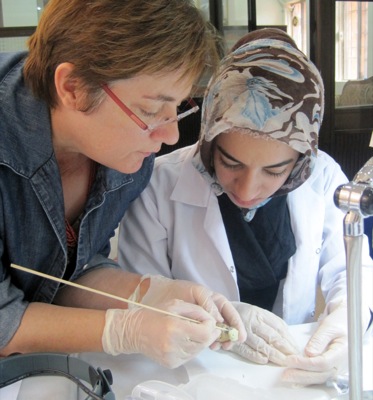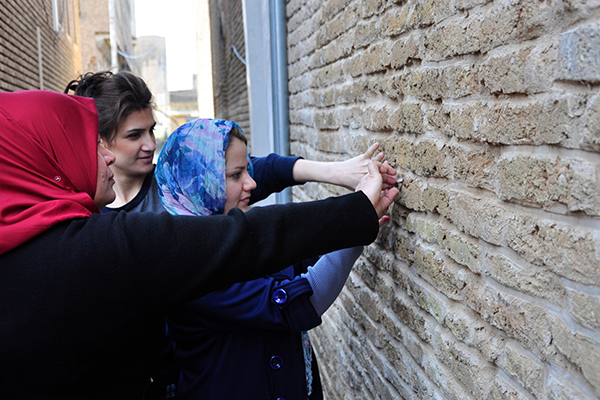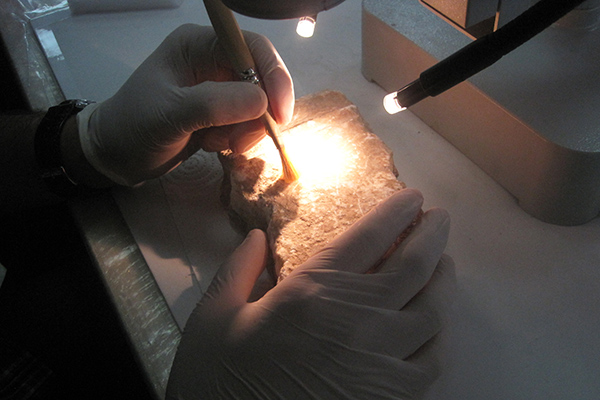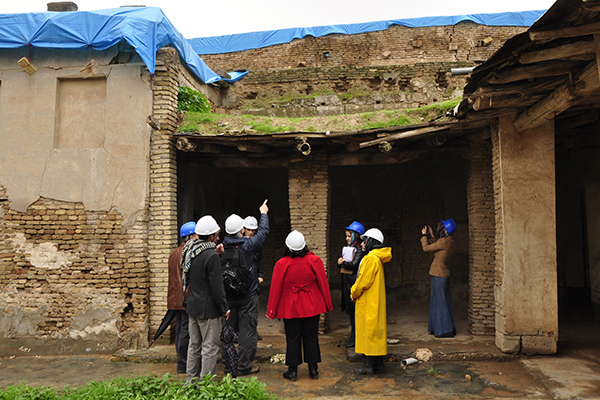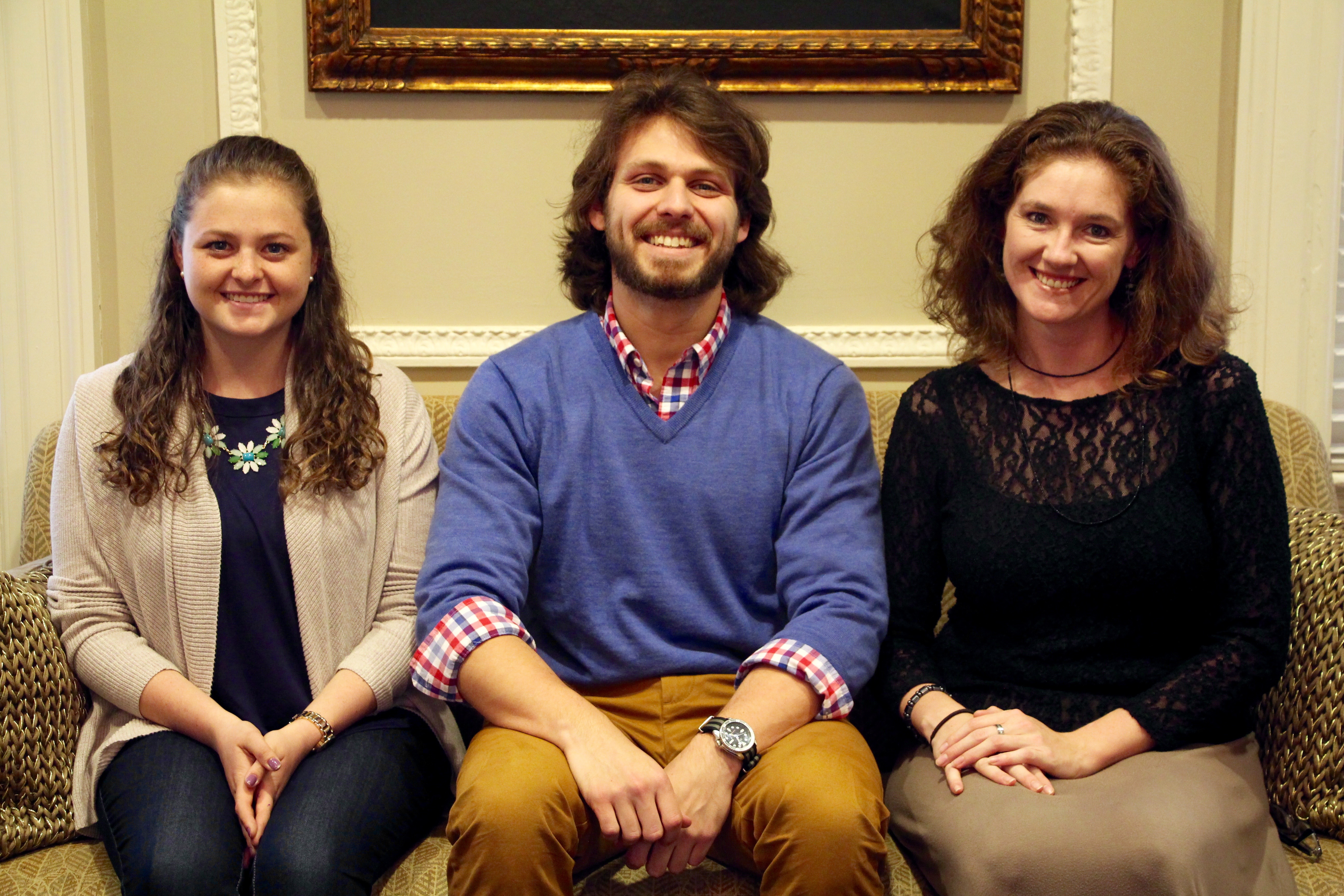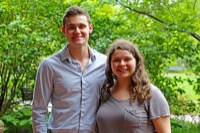

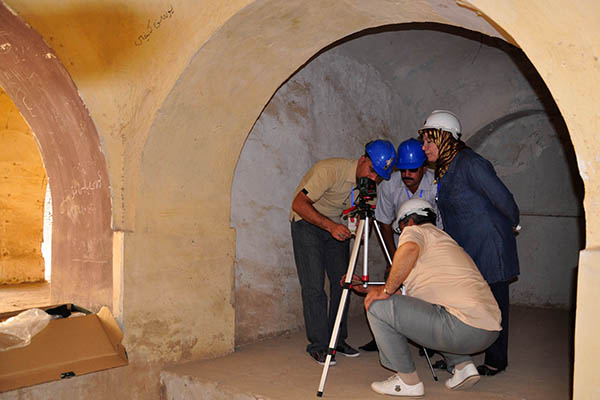
Hope for Iraq's heritage
Decade after museum looting, institute for preserving Iraq's heritage thrives
9:29 a.m., April 12, 2013--A decade ago in the Iraq Museum in Baghdad, a curator sat holding his head in despair amid shattered exhibit cases and broken statues. Looters had plundered thousands of artifacts important to Iraq and the world, from intricately carved cylinder seals for leaving one’s mark in wet clay, to exquisite ivory figures that once decorated the palaces of Assyrian kings and queens.
Out of such loss, a unique partnership involving Iraqis and Americans has emerged to help protect Iraq’s heritage.
Global Stories
Fulbright awards
Peace Corps plans
Since its official opening in 2009 in Erbil, Iraq’s fourth largest city, the Iraqi Institute for the Conservation of Antiquities and Heritage (IICAH) has instructed more than 125 museum staff from across the region in intensive 24-week conservation training sessions. The institute’s state-of-the-art facilities reside next to the open-air laboratory of the 8,000-year-old Erbil Citadel, an ancient town on a 100-foot-tall earthen mound.
In a nation where experts say conservation training is a generation out of date, students at IICAH are soaking up the latest techniques for stabilizing archaeological sites and evaluating and repairing artifacts ranging from cuneiform tablets to antique rugs.
“We believe the institute is a model for threatened cultural heritage sites and sectarian conflicts around the globe,” says Debra Hess Norris, chair of the Department of Art Conservation at the University of Delaware and one of IICAH’s academic advisers.
The institute’s partners include the Iraqi State Board of Antiquities and Heritage, the Kurdistan Regional Government, the University of Delaware, the University of Pennsylvania, the University of Arizona, Winterthur Museum, the Walters Art Museum, the Getty Conservation Institute, the U.S. State Department and the U.S. Embassy in Baghdad. Together, Norris says, they are working to make up for lost time.
Before 1980, as the international team notes, professional conservators with decades of experience staffed the State Board of Antiquities and Heritage, the entity responsible for preserving Iraq’s heritage. Then the Iran-Iraq war erupted, followed by the Gulf War, which, coupled with a repressive government, resulted in dwindling support for collections and archaeological sites. The crisis culminated with the onset of the U.S.-Iraq War and the looting of the Iraq Museum in 2003, which brought international attention to the state of Iraq’s heritage sector.
An important step in establishing IICAH in 2008 was its plan for self-sustaining governance through an Iraqi board of directors and an international advisory council, notes Lois Olcott Price, director of conservation at Winterthur Museum in Delaware, who chairs the institute’s Iraqi-American Advisory Council.
“This is a new model for Iraq involving by-laws, voting, term membership and a generally more democratic, less top-down management structure,” Price explains.
Another strength of the institute, according to Terry Drayman-Weisser, director of conservation and technical research at the Walters Art Museum in Baltimore, is its success in bringing together students from a nation as ethnically diverse as Iraq.
“Men and women, Arabs and Kurds, Muslims and Christians, Sunni and Shia are working together with American and international instructors,” Drayman-Weisser points out. “It’s a shared passion for preserving one of the world’s oldest civilizations.”
Working through their administrative base at the University of Delaware’s Institute for Global Studies, the partners function as an international team, coordinating IICAH’s curriculum and the U.S. and international scholars who travel to Erbil to teach and mentor the student conservators.
And the training is paying off, the team says. While faculty conservators have been restoring beautifully carved ivories from Nimrud — a project funded by Bank of America, the students have undertaken practicums in such areas as museum exhibit design and the structural assessment of ancient buildings. Some students are being cultivated as “master trainers,” as part of the institute’s sustainability plan and the eventual goal of handing the full reins of IICAH’s administration over to the Iraqi partners as the institute matures.
And, coming full circle, one of IICAH’s graduates is now the head of training at the Iraq Museum in Baghdad.
“The work of all of the IICAH partners across Iraq, the U.S. and around the globe is so vital,” notes Nancy Guerra, director of the Institute for Global Studies at UD. “Preserving Iraq’s heritage, as the cradle of civilization, is important no matter where you live.”
Article by Tracey Bryant




